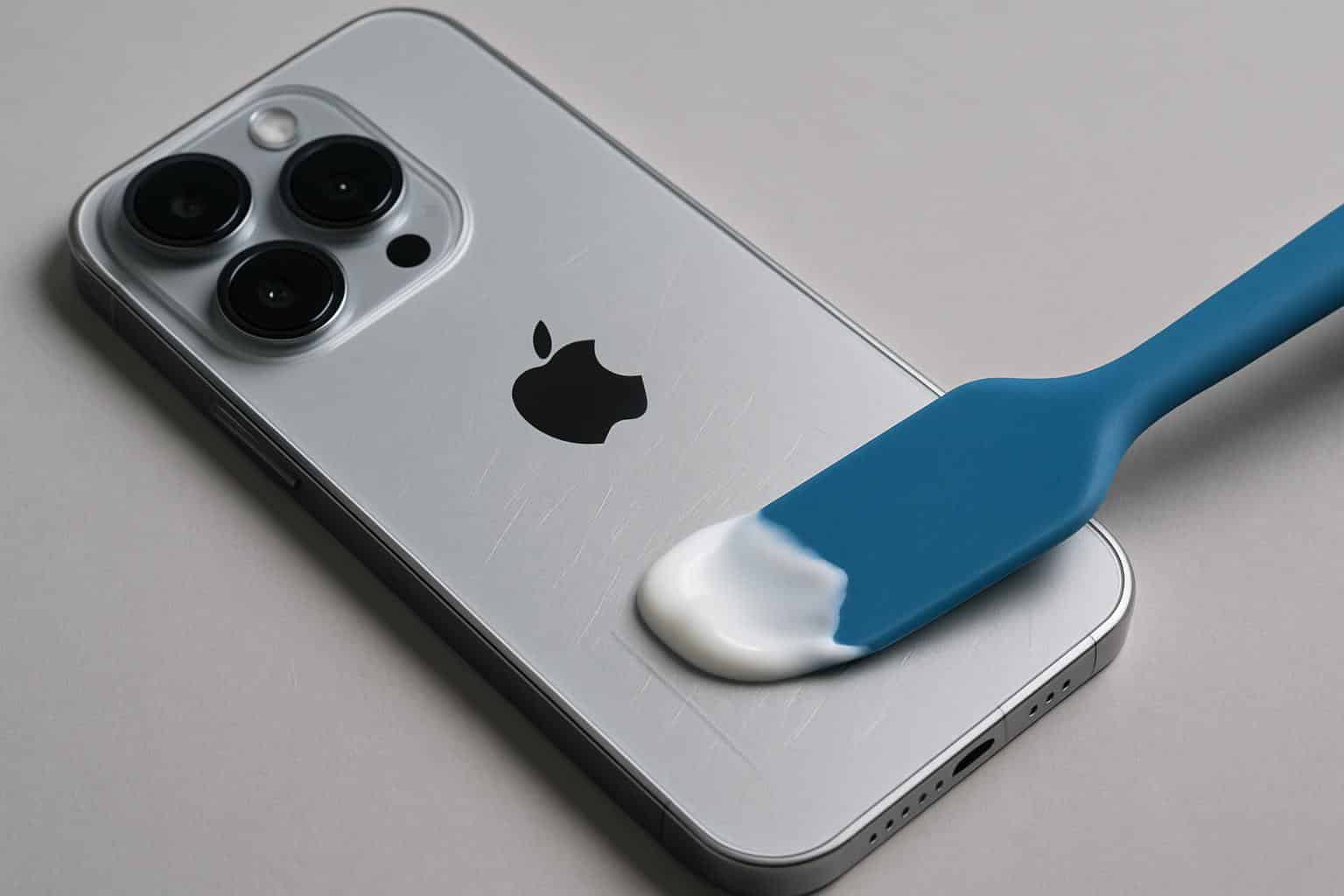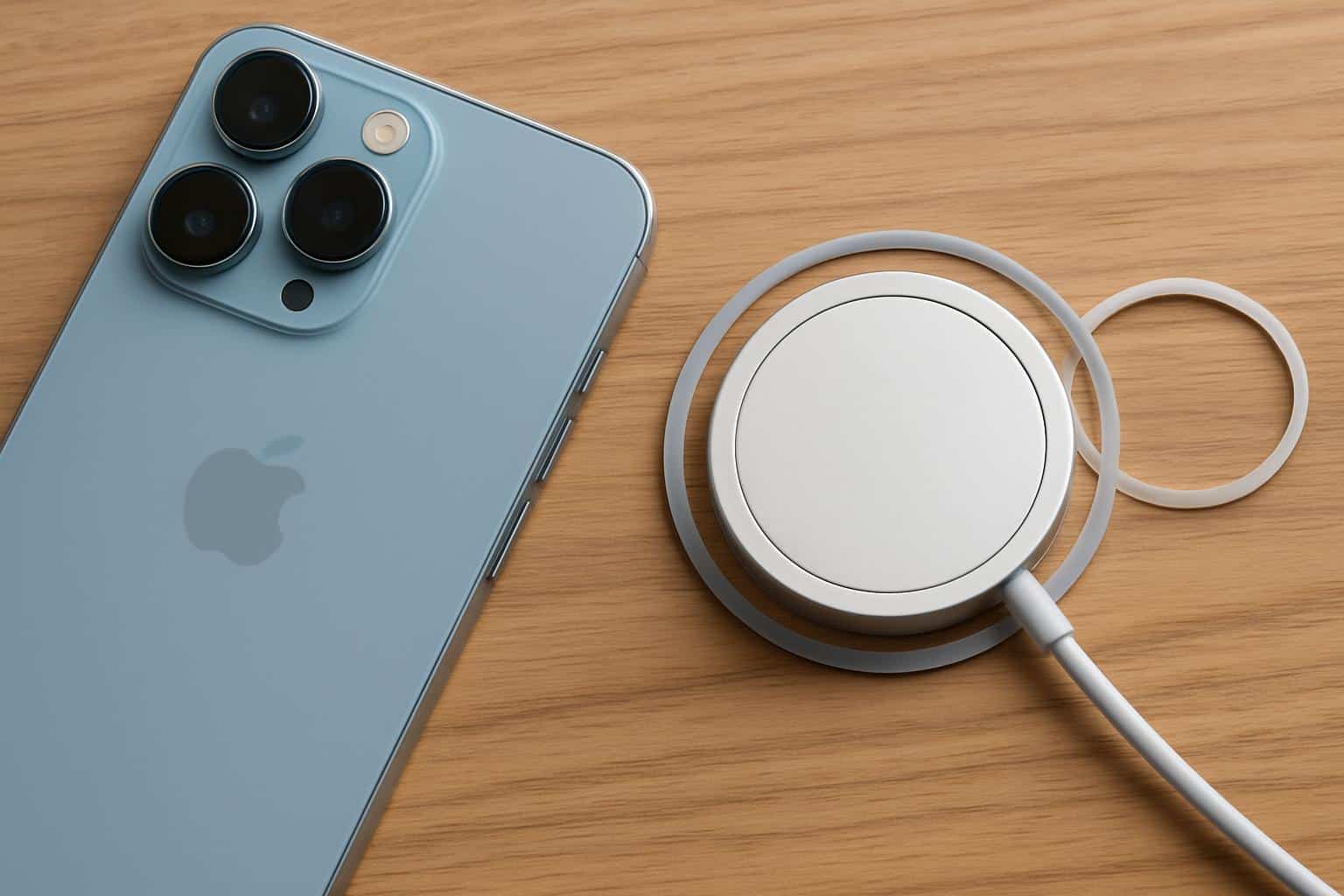Apple will add thin silicone rings to the in-store MagSafe chargers, so they won’t leave circular marks on iPhone 17 display units. The tweak, which Consomac was among the first to note in French retail locations, is just a little buffer that sits between the charger puck and phone’s aluminum surface — an intervention that serves as a stark reminder of how much demo hardware gets used and abused and how small adjustments can ripple out into headlines.
What Apple Is Changing on In-Store MagSafe Charger Docks
The silicone ring seems to wrap around the lip of the MagSafe puck, sacrificing itself to soften any contact with the iPhone’s rear surface and protect against any micro-debris on the charger grinding into the finish. Apple has apparently told local outlets that some of the marks on the demo devices are from residue left by well-worn stands rather than genuine gouges, however, and that it’s updating store hardware to combat this.

It’s unclear if this is a worldwide release or just an interim solution for high-traffic stores, and there is no confirmation that such an accessory will be made available to consumers. Still, the move is in keeping with Apple’s past retail playbook: fix the environment first and then decide if this issue merits an extended hardware or accessories change.
Why MagSafe Can Leave Rings on iPhone 17 Display Units
MagSafe uses magnets to center coils for wireless power transfer, so the puck snaps into solid contact at the same spot thousands of times on store demo devices. Even benign particles — like dust, fabric lint, oxidized metal from a worn charger — can serve as a fine abrasive under prolonged pressure. It’s all tribology basics: contact pressure times repetition equals visible wear.
Apple has managed these kinds of optics before. When MagSafe was released, the company cautioned that circular imprints might appear over time on leather cases — a problem MagSafe owners have reported and Apple acknowledged in support documents. If the interface is dirty (or, when used with metal coatings, if the surface treatment is very thin in high-contact areas) this can also apply to bare and coated metal.
From a power perspective, adding that millimeter-thin silicone ring slightly increases the coil spacing. The Wireless Power Consortium has observed that separation can slightly reduce efficiency, but any thin, flexible spacer is a small power/efficiency trade-off compared to scratch protection on a surface that sees use all day long.
Is Anodized Aluminum to Blame for iPhone 17 Wear?
Most critics have noted the most visible wear on the iPhone 17 Pro line’s anodized aluminum, saying that it’s getting scuffed more easily than the titanium body of the last generation. Apple has pushed back against durability worries: its anodized frame, the company insists, meets its high standards while conceding that color finishes may exhibit wear as dyes age.
Context matters. Aluminum anodizing doesn’t have to be brittle. According to ASM International, hard-anodized films can be as high as 400–600 HV, though 300–500 HV is more common for refined aluminum alloys used in consumer electronics to allow higher surface brightness. Thinner dye-sealed coats are quite scratch-resistant in normal use, but can show micro-abrasions when used over and over with high-pressure contact on contaminated surfaces — precisely the type of repeated-contact scenario experienced by a showroom puck.
That is to say, the problem isn’t necessarily in having used that finish; the retail environment is extreme.

A shop unit can be docked and undocked hundreds of times a day — orders of magnitude more cycles than the average owner will perform with a bedside charging station over the course of a month.
A Simple Silicone Buffer Can Have an Outsize Impact
Meanwhile, silicone would make a well-designed interface in this case. It’s grippy on metal (it has a fairly high coefficient of friction for metal), so it helps keep your phone from sliding, and is compliant enough to hold onto debris rather than flatten it into the finish. The trade-off: silicone can also collect grit, so it needs to be cleaned frequently. For stores that’s a small maintenance cost; for consumers, the same can be had by wiping down pucks or using reed-thin protective skins on the charger or phone.
There are additional engineering levers Apple might use, if it wanted to. Whether that would mean a stronger clear coat in the MagSafe contact area, a more durable polymer on retail pucks (POM or PTFE, perhaps), or revised cleaning guidance is uncertain, but these changes can minimize the likelihood of visible rings. For now, the silicone ring is a quick fix that spares the need for retooling.
What It Means for Buyers Considering iPhone 17 Models
What that means for everyday users is simple:
- Keep your MagSafe puck free from gunk.
- Don’t charge on sandy or dusty surfaces.
- Accept the reality of typical cosmetic wear with dyed finishes over time.
Consumer Reports and other independent testers have found for years that controlled abrasion, as opposed to catastrophic scratching, is the primary culprit leading to visible aging in phone exteriors.
If Apple’s silicone ring appears in at least some more stores, it will presumably tamp down chatter about “scratchgate” by minimizing the showroom’s worst-case conditions.
The episode also highlights a more general truth about modern gadgets: when magnets and wireless power allow contact to focus on one consistent spot, even minor improvements in the interface layer can pay big dividends in how a product looks after thousands of cycles.
Apple has not publicly acknowledged whether the silicone answer is being pushed full-time or company-wide, but with such low cost and high reward, one wonders why Apple doesn’t just up and standardize these across its entire retail portfolio. As quick fixes go, that one is neat, because it addresses the cause, not just the symptoms.

